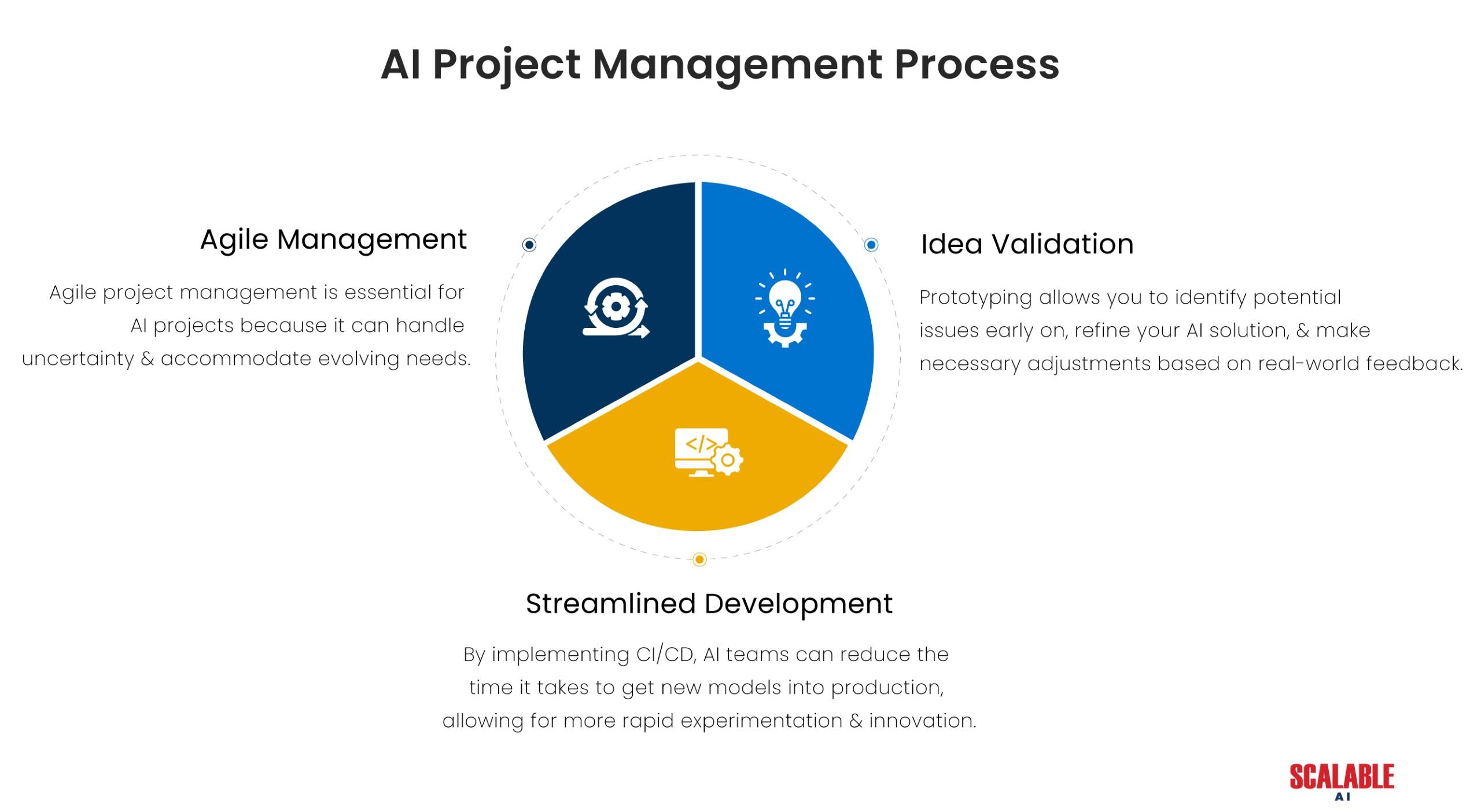Executive Summary :
While the rapid adoption of AI brings numerous benefits for businesses and end-users, it is still in its early stages. Companies have yet to discover concrete use cases and measure the actual effectiveness of AI. A combination of novelty, inexperience, and capabilities has sparked numerous inquiries about managing AI projects. Given the inherent complexity of AI project management, understanding the intricacies of handling AI initiatives becomes crucial. The blog outlines the steps and process to seamlessly transition from a Proof of Value (POV) to efficient and successful AI project execution. Read along to learn how to manage the complexities and overcome the challenges of executing an AI project.
Understanding the AI Project Complexity
A bottom-up approach prevails in AI projects, especially during the Proof of Value (POV) phase. AI concludes its own rules and processes, leveraging extensive datasets. As the AI development cycle matures, it uncovers numerous opportunities. Project completion involves navigating through exploration, experimentation, and trial stages. While this approach often yields revenue-friendly outcomes, it can also lead to higher development costs and extended timelines. Lastly, effective AI project management integrates change management into the Agile process. AI program managers adhere to the fail-fast principle, emphasizing rapid exploration and early identification of incorrect approaches rather than discovering flaws later in the development journey.
The right approach to managing AI Projects

Finding the Right Challenge
The first step in any AI project is identifying the problem or use case. One needs to answer two key questions: What problem are they trying to address, and what results do they hope to achieve? It’s important to remember that AI is a tool, not a solution. There may be multiple ways to approach a problem, some of which might not involve AI. We focus on finding solutions that can be enhanced with AI, not solely reliant on it.
Validating the Solution
Stakeholders need to confirm their interest in the proposed solution. There are various ways to test the problem-solution fit, like traditional lean startup methods or product design sprints. A significant advantage of AI is that we can quickly build a basic version of the solution using human resources or a minimum viable product (MVP). This allows us to analyze the solution effectively and confirm within a reasonable time frame that the problem truly needs an AI approach.
Data Preparation and Management
Once we’ve established a customer base for the solution and confirmed the feasibility of building the AI, we can begin managing the machine learning project. This involves gathering and handling the data. The first step is categorizing the available data into structured and unstructured formats. While this might be simpler for startups or companies with limited data, managing multiple AI solutions for large enterprises gets more complex.
Selecting and training the algorithms
After selecting the algorithm, the next step involves training the model by inputting data. Throughout the process, the focus is on the model’s accuracy. The aim is to establish a minimum acceptable threshold, and applying statistical rigor is a critical step to expedite AI development while minimizing the need for extensive fine-tuning later.
Project Deployment
Prepare a deployment strategy for your AI project, considering how, when, and where you will deploy it. Determine the best format, tool, and approach for deployment and decide where to deploy it. Align your strategy with project objectives, metrics, and user expectations.
The AI Project Management Process
Agile Management
AI projects can be flexible by using agile project management. This means getting feedback often, making changes, and delivering results in smaller chunks. This allows teams to adjust to new needs as the project progresses.
Validating Ideas Quickly
Start by building prototypes and proof-of-concepts. This helps test your ideas early on, get feedback from others, and make the best decisions. Set aside time and resources to try different things and make improvements.
Streamlined Development
Continuous integration and deployment (CI/CD) help smooth development. This allows for faster testing and deployment of your AI models, allowing the team to adapt quickly to new requirements.
Conclusion
AI project development is a multifaceted and dynamic process that demands meticulous planning, collaboration, and adaptability. Organizations should focus their time and investment on finding the right resources to achieve the desired results. Also, managing resources, stakeholders, and project deliverables is essential. By following the best practices outlined in the whitepaper, stakeholders can navigate the complexities of AI project development and unlock the full potential of AI technologies for their organizations.
Read Whitepaper AI Project Success: Demystifying the Path to Breakthroughs
